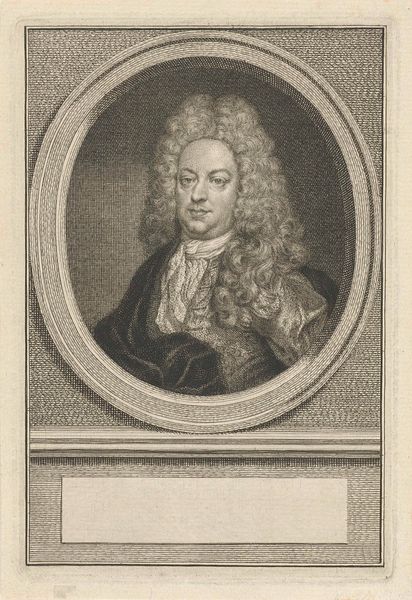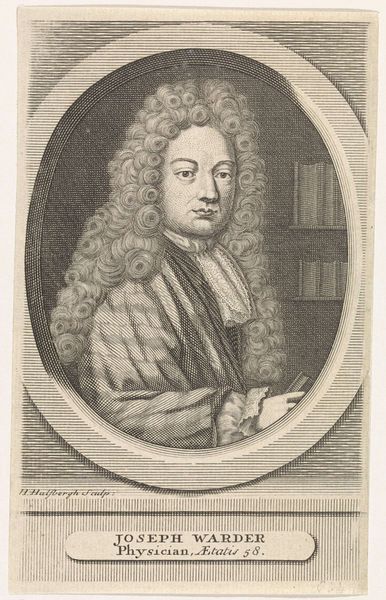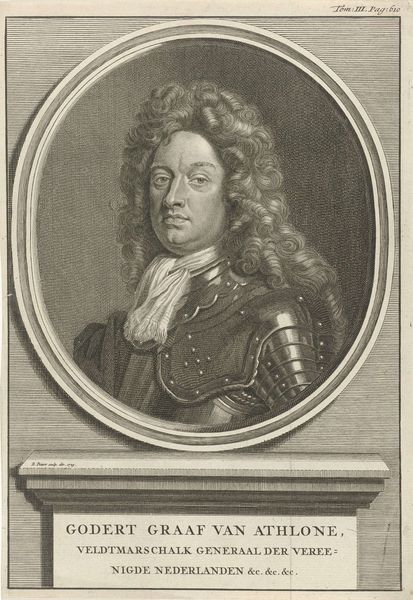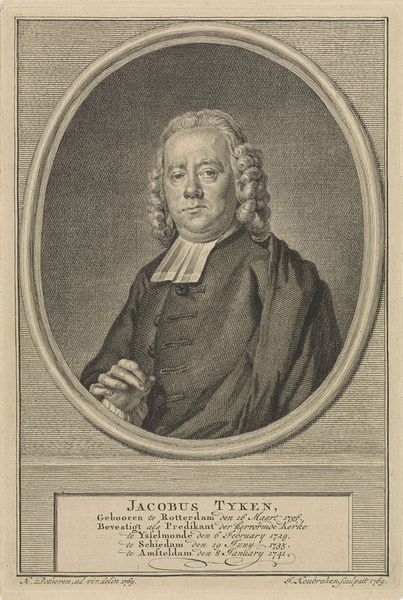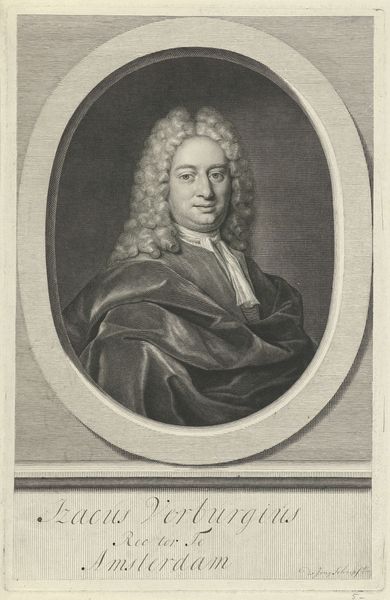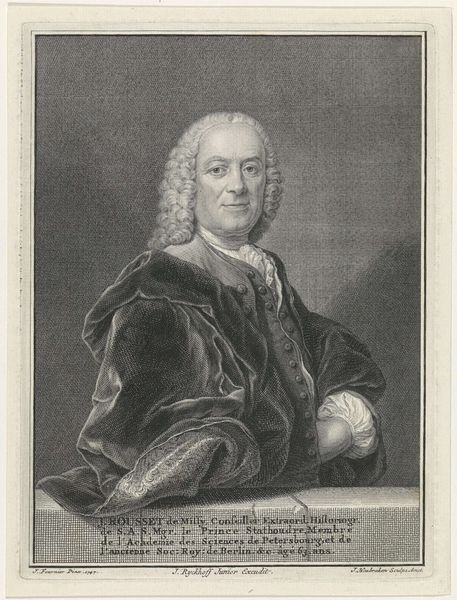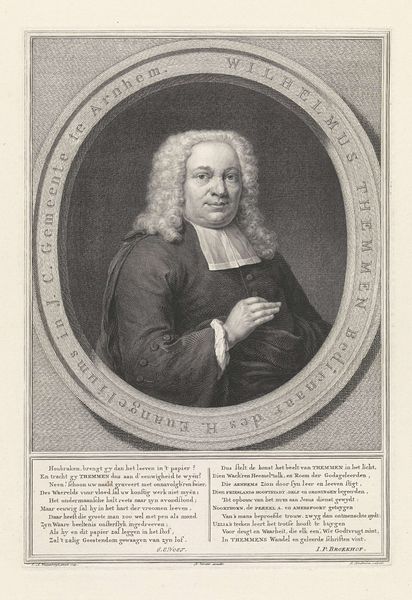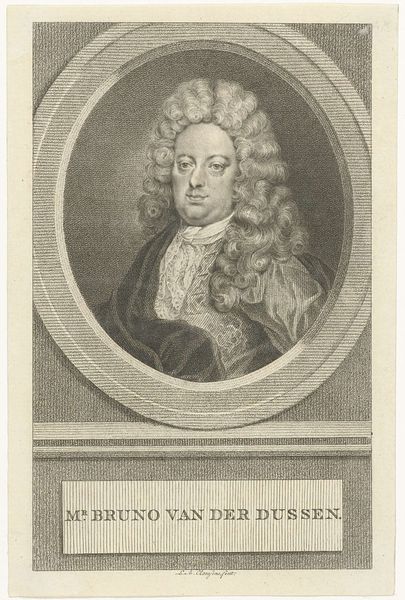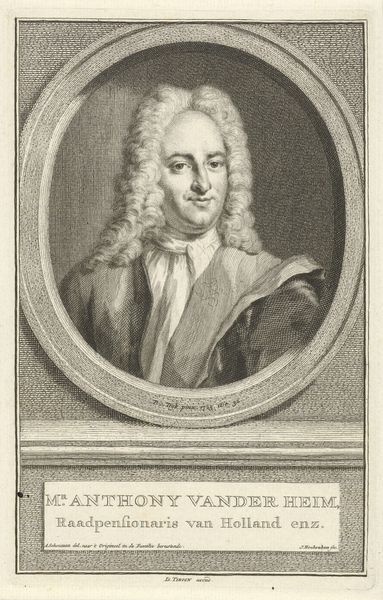
engraving
#
portrait
#
baroque
#
old engraving style
#
portrait drawing
#
history-painting
#
engraving
Dimensions: height 205 mm, width 151 mm
Copyright: Rijks Museum: Open Domain
Editor: We're looking at "Portret van Johann Hübner," an engraving made sometime between 1739 and 1765 by Ernst Ludwig Creite. It's striking how the textures are rendered using only lines. What aspects of this piece stand out to you? Curator: What immediately grabs my attention is how this portrait participates in a visual dialogue between status and intellectual pursuit within the context of the 18th-century social structure. Notice the baroque wig and the ornate script at the bottom - these speak to a carefully constructed persona. What does that document in his hand tell you? Editor: It looks like a map. He seems to be presenting it. Does this mean the sitter's occupation related to cartography or exploration? Curator: Perhaps, but consider also how the inclusion of a map—itself a symbol of knowledge, control, and dominion—contributes to the sitter's overall presentation as a learned and influential figure within Hamburg society. The printing press further democratized such imagery and gave rise to an increased literacy of political messages. Does that impact how you read this piece? Editor: I see what you mean. It’s less about personal exploration and more about asserting authority and education in a changing society. It makes me consider who would commission and circulate an engraving like this and how that relates to the sitter's identity. Curator: Exactly. Understanding this print requires that we consider not only the sitter but also the socio-political function of imagery itself and how individuals navigated the world around them in an effort to craft the message they wanted the world to perceive about their position in a local environment. Editor: This changes how I think about portraits from this time; I will analyze how those figures use the visual tools available in those eras for status. Thanks for your insight!
Comments
No comments
Be the first to comment and join the conversation on the ultimate creative platform.

